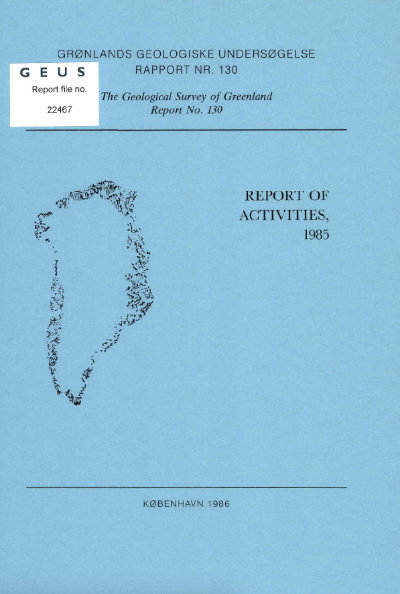A boninitic dyke in the eastern Sukkertoppen region: geochemistry of the boninitic-norite dyke swarm of southern West Greenland
DOI:
https://doi.org/10.34194/rapggu.v130.7940Abstract
Large early Proterozoic (c. 2100 Ma) basic dykes occur throughout the Archaean craton of southern West Greenland (Allaart, 1975, 1982; Bridgwater et al., 1985; Kalsbeek & Taylor, 1985) and have become known as the MD (meta-dolerite) dykes (Bridgwater et al., 1976). Four generations (MD1, MD2, MD3a and MD3b) can be distinghushed by their mutuaIly discordant relationships and their progressively evolved geochemistry along an apparently common tholeiitic trend (Rivalenti, 1975; Hall et al., 1985). However, the earliest generation comprises two distinct lithological types, one noritic and the other doleritic. Noritic dykes predominate in the eastern Sukkertoppen region (cf. Garde et al., 1983), while dolerite dykes become increasingly abundant towards the south. A few N-S trending noritic dykes extend southwards through the eastern Godthåbsfjord and Fiskenæsset regions and similar dykes occur rarely in the Frederikshåb region (Andrews, 1973, personal communication, 1985). Textural and geochemical evidence presented here from a quenched variety of the norite dykes demonstrates that these dykes crystallized from magmas with strong boninitic affinities, as has also been suggested on geochemical grounds for other dykes from the same swarm by Bridgwater et al. (1985), and that they are not genetically related to the dolerites of the tholeiitic MD swarm. In view of this evidence, and since these noritic dykes are neither metamorphosed nor dolerites, it is suggested that they should no longer be considered to be part of the MD dyke swarm, but that they warrant a new stratigraphic name.
Downloads
Published
Issue
Section
License
This article is distributed under a CC-BY 4.0 licence, permitting free redistribution and reproduction for any purpose, even commercial, provided proper citation of the original work. Author(s) retain copyright over the article contents.


